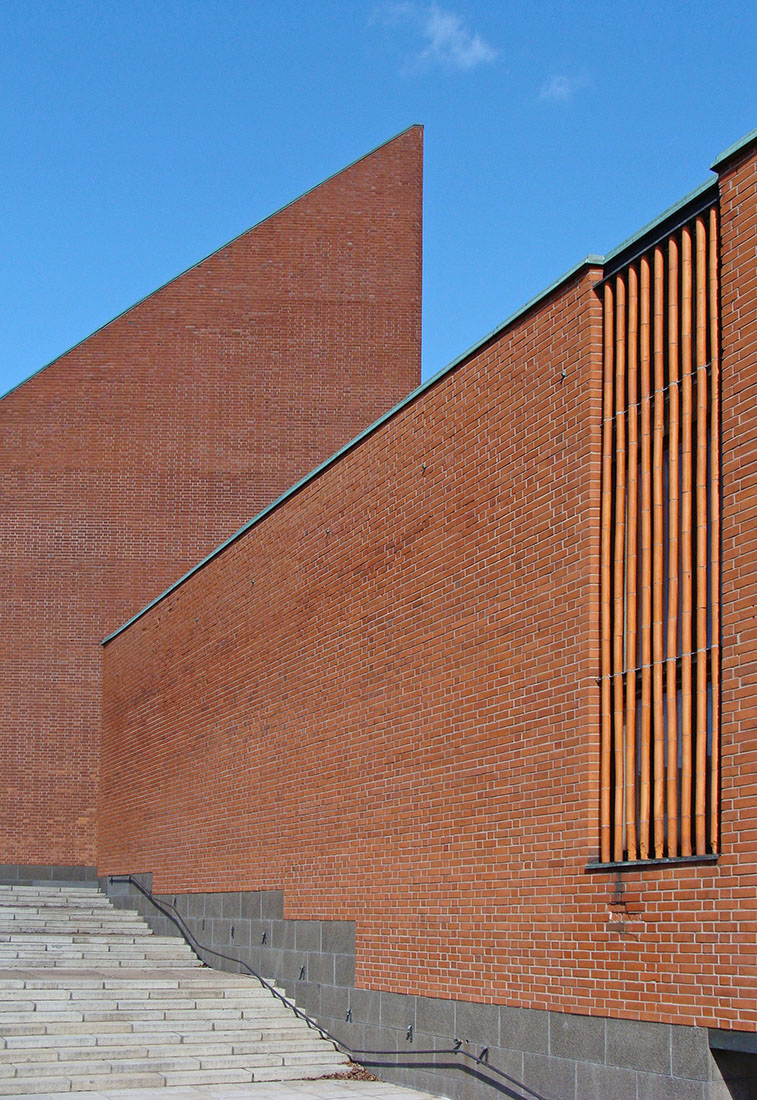 |
 |
 |
 |


University of Technology Main Building
Otakaari 1, Otaniemi (Helsinki)
1955 - 1964
In 1949 Alvar Aalto won the competition for the master plan of the Otaniemi University of Technology. During this first phase, the main focus was the selection of a suitable site and the definition of criterias for its development. One of the key critieras of the proposal by Alvar Aalto was the separation between car and pedestrian traffic. Fortunately the design of the majority of the various buildings was commissioned to Alvar Aalto, so for example the important main building, several laboratories and the main library. Only when necessary other architects were asked to design buildings on the campus. The site selected for the university campus had previously been a large manor. The preliminary planning of the main building started in 1953, while the main drawings were made in the years 1960 - 1961. Construction work for this building got under way at the beginning of 1962, and it was taken into use in two stages during 1964. The main building is located on a central hillock, where originally had been located the main manour house. Through this siting, the main building dominates its neighborhod. One side of the main building is oriented towards the street with its car traffic, while on the opposite side is to be found the terrace-like park, which is exclusively reserved for pedestrians. This park links the main building to the students' residential area on the other side of the green space. The borders of the pedestrian park are mainly defined by the main building and the main library of the university, which was errected some years later.
The dominating element of the main building is at the same time the main architectonic idea. A group of large auditoriums, which are arranged to create a semi-amphitheatre-like figure, with the roof strutcture following the rising arrangement of the interior seating. This construction allows the lecture halls to receive indirect sunlight while the windows at the same time result in a theatrical increase in height on the exterior. This results in a landmark-like plastically formulated volume, located at the central square of the campus, automatically making this squere the place where students gather. This central squere is the climax of the the terrace-like park and is also intended for open-air meetings of the students and for speeches by the rector and other events.
With exception of the large lecture halls the actual teaching facilities are arranged around smaller central courtyards. These were also connected to secondary lecture rooms, offices for the faculty professors, laboratories and other research facilities. The design of the main building makes three main groups discernable, which are the General Department, Department of Land Surveying and Department of Architecture. All remaining departments with their specialized teaching facilities are housed in separate buildings together with the necessary laboratories. The design of each of the departments allwos for extensions without disturbing the whole ensemble.
The principal material used on the campus is specially fabricated dark red brick. In the main building the brick is combined with black granite and copper. The Department of Architecture is recognizable by the partial cladding with marble. On the interior the majority of the teaching facilities and lecture halls is painted white. The ceilings are clad with wood and metal for acoustic reasons.